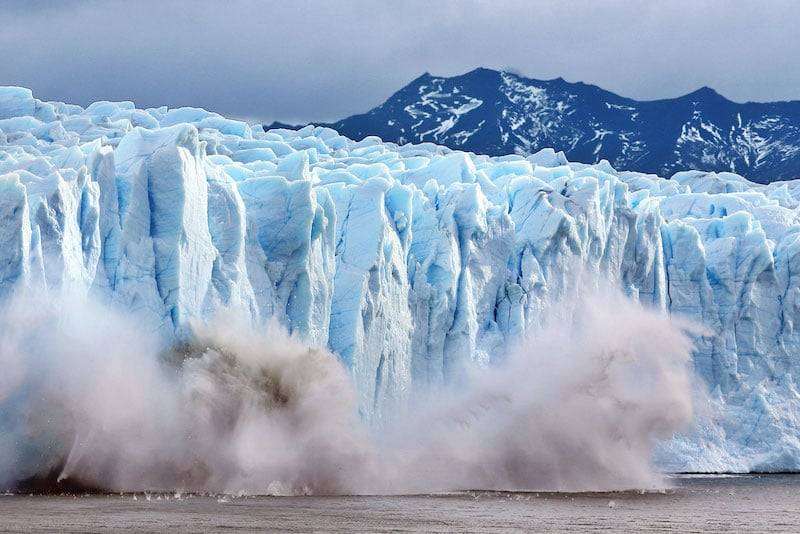Scientific studies have sounded the alarm, warning of dangers threatening the ice caps, and may lead to their collapse, in the event that the ocean level rises by several meters, if the climate warms by an additional half a degree Celsius.
The ice caps of Greenland and Antarctica have lost more than 500 billion tons annually since 2000, equivalent to the capacity of six Olympic swimming pools every second, reports Al-Rai daily.
But climate models to date have underestimated the contribution of this melting to future sea level rise, and have only taken into account the effect of warming air on ice, while neglecting the complex interactions between atmosphere, ocean, ice caps, and some glaciers.
The researchers in South Korea and the United States have determined what the sea level rise will be by 2050 according to different scenarios of climate experts of the United Nations (Intergovernmental Panel on Climate Change).
According to AFP, if the current climate policies, which include the commitments made by countries under the 2015 Paris Climate Agreement, continue, melting in Antarctica and Greenland will lead to a rise in the water level of about half a meter.
This figure would rise to 1.4 meters in the worst-case scenario of a significant increase in greenhouse gas emissions.
This scientific study, the results of which were published this week in the journal Nature Communications, also identifies when the runaway melting and disintegration of these ice sheets might occur.
“Our model has thresholds for warming in the range of 1.5°C to 2°C, with 1.8°C as our best guess, measuring acceleration of ice loss and sea level rise,” explained University of Hawaii researcher Fabian Schlosser, a co-author of the study. Temperatures have increased on average by about 1.2°C worldwide compared to pre-industrial levels.
Scientists have long known that the West Antarctic and Greenland ice sheets, which could raise sea levels by 13 meters in the long term, have ‘tipping points’ after which breakup is inevitable. However, the temperatures associated with this phenomenon have not been precisely determined.
Other studies published this week in the journal Nature also show that Thwaites Glacier in West Antarctica is cracking in an unexpected way.
This iceberg the size of Britain has already shrunk 14 kilometers since the 1990s, but the phenomenon was not well understood, due to a lack of data.
An expedition of British and American scientists has drilled a hole 600 meters deep, twice the level of the Eiffel Tower, through a tongue of thick ice pushed by the Thwaites Glacier into the Edmundson Sea.
The scientists discovered signs of accelerated erosion, with formations in the shape of an inverted staircase, as well as cracks opened up by seawater.
“Warm water seeps into the cracks and erodes the glacier at its weakest point,” said Brittney Schmidt, an author of one of the studies and a professor at Cornell University in New York.
Another study, the results of which were published in Earth’s Future, indicates that rising oceans will destroy arable land as well as sources of drinking water, and force millions of people to flee sooner than expected.
The study authors concluded that “the time available to us to prepare for greater flood exposure may be much less than previously assumed.”
The estimates have so far relied heavily on misinterpreted data. When measuring the elevation of coastal areas using radar, the tops of trees or roofs are often confused with ground level. Therefore, it is actually much less than what was thought.
Tens of millions of people are particularly vulnerable in the coastal areas of countries such as Bangladesh, Pakistan, Egypt, Thailand, Nigeria and Vietnam.

